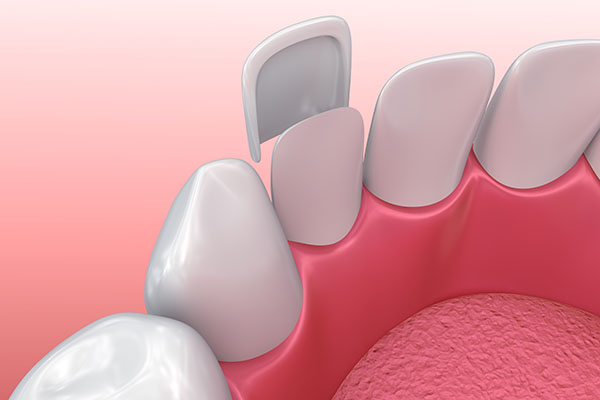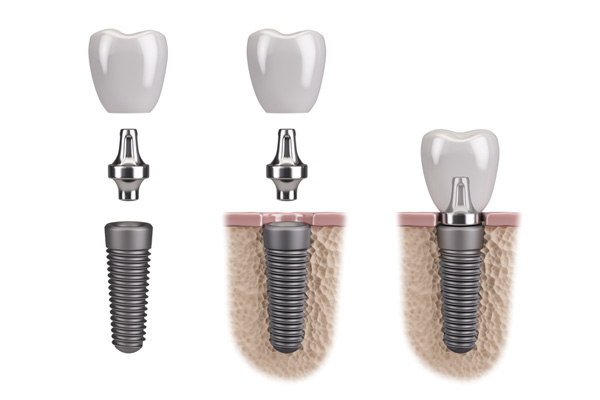 Dental veneers are made of porcelain or composite resin material. The shells cover the front surface of a patient's front teeth and can be used to change the size, shape, or color of teeth. These restorations have been used for years to transform smiles, but some may wonder about their permanency. There are several reasons to remove veneers and more than one option for replacing them as well.
Dental veneers are made of porcelain or composite resin material. The shells cover the front surface of a patient's front teeth and can be used to change the size, shape, or color of teeth. These restorations have been used for years to transform smiles, but some may wonder about their permanency. There are several reasons to remove veneers and more than one option for replacing them as well.
Reasons to remove veneers
According to the American Dental Association, placing veneers is considered an irreversible procedure. Because some enamel is removed, the teeth will always require some type of restoration over them. However, there are times when patients need or desire to have veneers removed. The most common concerns are cavities under the veneers or aesthetic dissatisfaction.
Recurrent decay
Due to the margin between the veneer and the natural tooth, cavities can form around the restoration. The margin can become a ledge on which plaque and bacteria collect. Once the dentist diagnoses recurrent decay around a restoration, it often has to be removed so the underlying tooth can be treated.
Staining or cracking
Some veneers can last for years. However, over time, the porcelain or resin surface becomes stained, and patients may be concerned about how the teeth look. A traditional teeth whitening agent is not effective on porcelain or resin; it can actually etch the surface. The shells may also become chipped or cracked over time. In these situations, removal and replacement are often necessary.
Options to replace veneers
While veneers are an irreversible restoration, this does not mean that replacement is impossible. Once a tooth is prepared for the treatment, it becomes slightly smaller than before. Therefore, the patient needs to cover it with some type of restoration.
New veneers
If a patient has been pleased with veneers and is simply ready for a new set, replacement shells can be an option. In this situation, the existing caps are removed, and new ones are cemented in place. In some cases, the dentist may be able to perform this treatment in only one or two office visits. The patient can choose a new shade for the shells if desired.
Full coverage crowns
If a patient experiences recurrent decay under a veneer, a full-coverage crown may be the next logical step. Unlike a veneer that covers the front surface of the tooth, a crown covers the entire tooth. Like veneers, these can be customized for the size, shape, and color that the patient prefers. Depending on how many teeth are being treated, a combination of veneers and crowns may be used.
Conclusion
Dentistry has come a long way in recent years, and more patients than ever can have a smile to be proud of. Veneers can last for a long time when properly cared for, but patients should be aware of what to do when problems arise. In this way, patients can make an informed decision about their oral health.
Request an appointment or call Thanasas Family Dental Care at 248-260-2878 for an appointment in our Troy office.
Recent Posts
With appropriate care, dental veneers can continue to cover up minor flaws in your teeth for over 10 years. A dentist may recommend veneers if you have an otherwise healthy tooth that is: Permanently stained or discolored Chipped Cracked Unevenly sized or shaped Spaced too far apart from adjacent teethDuring the procedure, a minimal amount…
You can cover up imperfections in your teeth with dental veneers, thin shells of porcelain that fit over your teeth, and bond to them. Veneers can last for at least a decade, but they typically need to be replaced occasionally if a dentist must treat underlying tooth decay or gum disease. Veneers can also stain;…
Dental veneers are a popular cosmetic treatment solution in smile makeovers. This is because they can address a range of cosmetic and oral health issues, such as teeth stains, misshapen teeth, uneven teeth, chips, and cracks. This review highlights how a dentist might utilize dental veneers during the smile makeover treatment process. Dental veneers are a…


